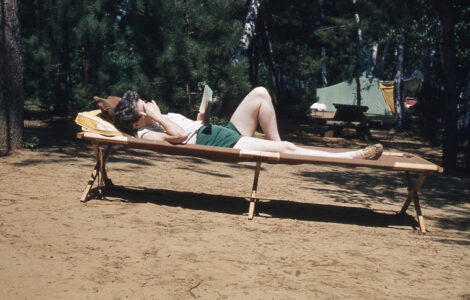The Sea Cook, part II

“Men are born with various manias: from my earliest childhood it was mine to make a plaything of imaginary series of events; and as soon as I was able to write, I became a good friend to the paper-makers.” — RLS
Robert Louis Stevenson loved to write. He was only age 6 when he got the fever, and it was an essay about Moses that got him going. His maternal grandfather Rev. Dr. Lewis Balfour, high priest of the Scottish Presbyterian Church, had challenged all the young cousins spawned by his 12 children to an essay contest. Louis wanted in, so his nurse Allison Cunningham, or “Cummy,” having already washed his brain with Calvinistic theology, helped him get started.
What they started would evolve over years into a classic case of father and son at war. Young Louis wanted only to write, while tradition expected him to fall into line just like his father, Thomas, had done when he came of age to apprentice into the Stevenson family firm of civil engineers, specializing in lighthouses and harbor works. Any good biography of RLS will give a notion of the protracted strain in their relationship, which wasn’t restricted to arguments over career choice but religion, too. And then along came that “Wild Woman of the West,” Mrs. Fanny Osbourne, who had the younger Stevenson spellbound in an affair that Thomas called “this mad, sinful business.”
But by the fall of 1881, events that had spanned an ocean and a continent had brought about peace at last between the warring parties. Thomas actually found himself feeling at home with and enjoying the company of his new daughter-in-law, Fanny, short for Francesca. Her 12-year-old son, Lloyd Osbourne, was her husband’s new sidekick, and Lloyd thought that his stepfather’s books to date were all boring and didn’t try to hide it. He wrote: “Feeling that he ought to do better, I often timidly remonstrated with him, pointing out that while he wrote beautifully, was not his fault perhaps in the choice of subject? But his only answer was to burst out laughing and say that there was certainly one thing he could never be — and that was a popular author.”
All that would change on a rainy September day when Louis would observe Lloyd drawing a map of an island just for fun. Louis butted in and took the map because here was an opportunity to take up Lloyd’s challenge to write something interesting, at least to Lloyd’s taste. So “The Sea Cook” came to be at the rate of a chapter a day, and “day by day,” said the author, “as I read aloud my morning’s work to the family,” his father Thomas started butting in. Wrote his son: “I had counted on one boy; I found I had two in my audience. My father caught fire at once with all the romances and childishness of his original nature.”
Thomas would contribute mightily to “The Sea Cook.” Though rebellious in youth, Thomas had struggled with himself inside before going along with the plan and following his two older brothers, Alan and David, into the family trade of building lighthouses to save lives. This was a new technological frontier in the early 19th century and not at all popular with a fringe group of British society known as the “wreckers.” Parasitically inclined, these subjects of the crown inhabited remote, rocky shorelines and lived off gifts from the sea made possible by shipwrecks. Survivors were not allowed to survive. They were murdered in cold blood. Anyone with salvage rights had to die, and it logically followed that there could be no witnesses. Shipwreck victims still struggling in the surf were stabbed or clubbed to death. The few who made it to shore were shot. Lighthouses were the kiss of death to the wreckers, and when Thomas was just a boy, brand new in the firm, he nearly fell victim to some. RLS would describe in his unfinished family biography, “Records of a Family of Engineers,” how his father almost got to meet the wreckers. It was aboard the NLB (Northern Lighthouse Board) cutter Regent:
“On a September night, the lay in the Pentland Firth in a fog and a violent and windless swell. It was still dark when they were alarmed by the sound of breakers, and an anchor was immediately let go. The peep of dawn discovered them swinging in desperate proximity of the isle of Swona. … There was in this place a hamlet of the inhabitants, fisher-folk and wreckers; their huts stood close about the head of the beach. All slept. … It was thought possible to launch a boat and tow the … a signal of distress was made and a gun fired. … Its detonation awoke the sleepers. Door after door was opened, and in the grey light of the morning fisher after fisher was seen to come forth. … Fisher after fisher, I wrote, and my pen tripped; for it should rather stand wrecker after wrecker. There was no emotion, no animation, it scarce seemed any interest; not a hand was raised; but all callously awaited the harvest of the sea, and their children stood by their side and waited also. To the end of his life, my father remembered that amphitheatre of placid spectators on the beach, and with a special and natural animosity, the boys of his own age. But presently a light air sprang up, and filled the sails and fainted, and filled them again; and little by little the fetched way against the swell, and clawed offshore into the turbulent firth.”
In command of the Regent through all that suspense was Captain Soutar, a real person of interest to RLS when it came to fleshing out the fictional Long John Silver.


